Driving a Sea Change in How We Live Our Lives
9 steps we can take to reduce our carbon footprint and protect our oceans

You may be reading this article from the comfort of your apartment, decked out in a pair of jeans and a t-shirt. Perhaps you are even snacking on a roast beef sandwich and thinking about taking your car for a spin.
Life is good.
Or is it? Because many of these activities are negatively impacting our environment and wreaking havoc on our waterways and oceans.
It turns out what we eat, wear, put on our bodies, feed our pets, and the very houses we live in, all play a part in climate change.
Thankfully, there are several ways we can minimize our environmental impact as we move through the day.
And while making changes in your life may seem daunting, most of these tweaks are incredibly easy to do. You just need to get started.
I got my start five years ago when my health fell apart. I spent my days in unbearable pain and was diagnosed with fibromyalgia. I had to do a complete 360 on how I lived my life. It turns out my new lifestyle was not only good for me, it was also much better for the environment and our oceans.
Here is what I have learned along the way and some quick fixes that can help us all protect our health, oceans and planet.
1. Steer Clear of Fast Fashion
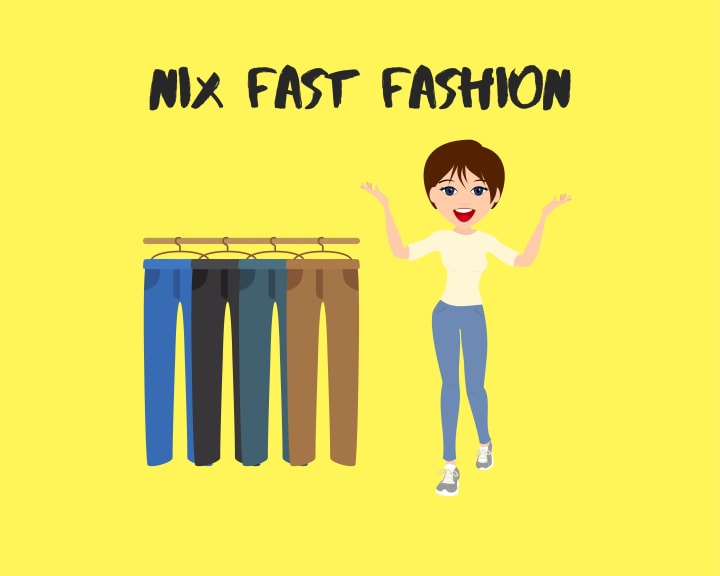
I used to be a customer of Stitch Fix. I didn’t even have to leave the house to shop. Like magic, clothes just appeared on my doorstep every three months.
And I loved how easy this made my life. Until I did some digging and found out just how detrimental fast fashion is to the oceans and our environment.
Fashion contributes to roughly 10% of all the carbon emissions in the world. And based on our currently consumption habits, this number is expected to leap to 50% by 2030.
Dyeing cotton also clothes sends massive quantities of wastewater into our rivers and streams. Textile dyeing is responsible for approximately 20% of the world’s water pollution.
So, I have nixed my Stitch Fix subscription and have stopped buying clothes I don’t need and will never wear. Now, I try to buy second-hand clothes. And when I do buy new purchases, I make sure I seek out brands that use eco-friendly materials-- like Patagonia, which uses recycled plastic in their clothing.
You can also make this switch. Simply look for brands that are B Corporation Certified, Fair Trade Certified, and Global Organic Textile Standard (GOTS) Certified. If you want to take it one step further, try to use shopping sites that also offer carbon-offset shipping.
2. Wash Your Clothes Less and Use Front-Loaders
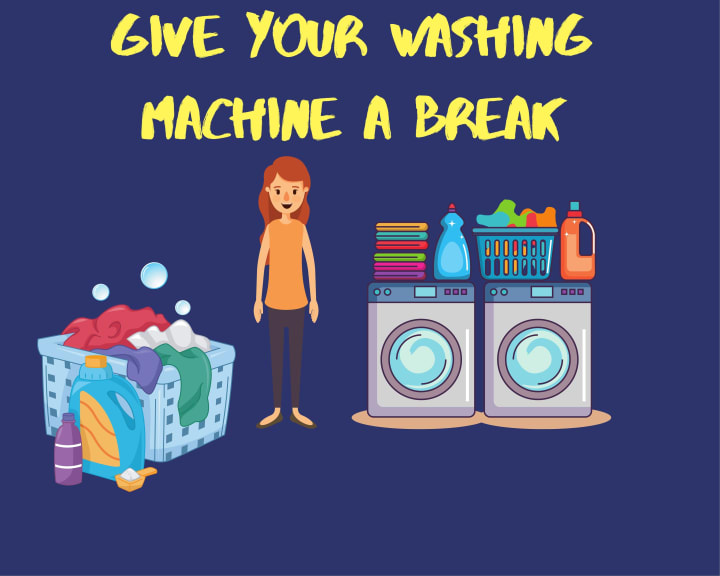
It turns out that washing our clothes can damage our oceans. Every time we throw clothes into the washing machine--microfibers, which are especially prevalent in polyesters, are released into the water system. In fact, close to 500,000 tons of these microfibers make their way into our waterways and oceans every year.
This is like tossing 50 billion plastic bottles in the ocean every 12 months. Sadly, 35% of these fibers will never fully decompose and run the risk of being ingested by marine life.
You may be scratching your head, wondering what to do. After all, we all need to wash our clothes from time to time. But I have stopped washing our towels and sheets quite so much.
My daughter used to go through four towels a day. Before you ask why, just understand she is a teenager. So, there is no rhyme or reason behind this.
Now we hang and reuse the same towels all week. We wash in cold water with eco-friendly detergent because this doesn’t break down the fibers as much as hot water does. And we use a front-loading washer. We always have.
If you have a top-loading machine and are looking for a replacement, be sure to look at front-loaders. They release 7X fewer fibers than top-loaders and will dramatically reduce the amount of plastic that gets released into our water systems and oceans.
3. Be Careful What You Put Down the Drain

We’ve all tried to put bacon fat down the drain. I know I have. I’ve even accidentally dropped medicine into the loo. And I have seen my fair share of baby wipes being thrown into public toilets because they look like toilet paper.
Sadly, when we put things like this down the drain, we put a big strain on our sewage systems. This can lead to sewage leaks, which then find their way into our water system.
Waste removal plants can't separate medicine, harsh chemical cleaners, and bug/weed killers. Because roughly 40% of the sewage that goes to these plants is put back into our water systems, these toxic substances find their way to our oceans.
Fortunately, if you are like me, you will be able to find some quick fixes. Take plumbing, for example.
Last year, when we fixed our bathrooms, we installed dual flush toilets. These save us roughly 4,000 gallons of water a year. And if you want to go one step further than we did, you can install waterless composting toilets. These eco-friendly toilets help to reduce the load on our sewage system.
We also made a point of having all our pipes checked. One of our faucets was leaking, so we decided to check all our plumbing.
It turns out this is good practice because leaky plumbing is the number one source for wastewater getting into the atmosphere and finding its way into our oceans.
We also try to avoid putting things down the drain that don’t belong there. We store bacon fat in a jar under the sink and switched to Seventh Generation dish soap. We have also eliminated bleach and harsh cleaning products. Bleach, in particular, triggers pain for me.
I like ECOS, but there is a good range of eco-friendly cleaning products out there these days. And if you are using phosphate-based products, I would strongly recommend making a switch. Phosphate-based products release too much phosphate into our water systems, leading to algae blooms that deprive the water of available oxygen and kill marine life.
To get a better sense of all the toxic substances you should steer clear of, you can reference the Made Safe Hazard List. I find this incredibly handy.
4. Be Picky About Your Beauty Products
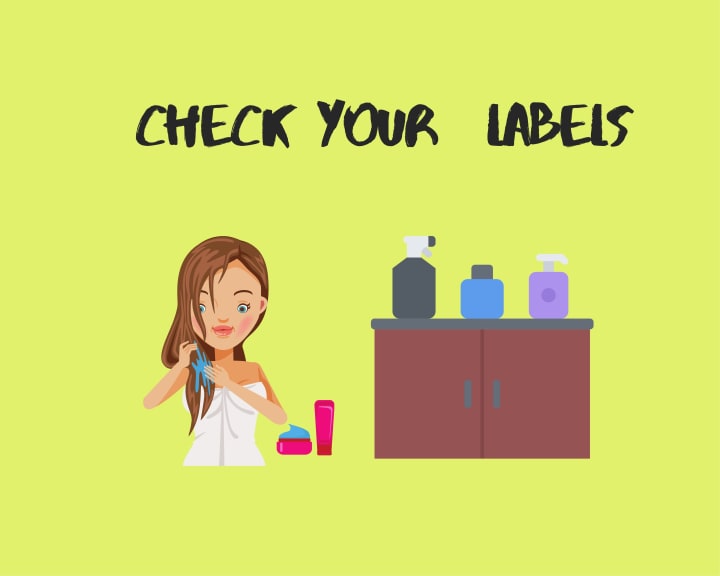
You may be aware that beauty products are full of toxic materials and come in a variety of plastic packaging—both of which are bad for the environment.
But what you might not know is that the beauty products themselves also may include microbeads which are tiny beads of plastic that can’t be filtered or removed by treatment plants.
This means a lot of this plastic ends up in our oceans, adding to the 1.8 trillion pieces of plastic that are already part of the Great Pacific Garbage Patch today.
One researcher estimated that a single tube of facial scrub includes over 300,000 plastic microbeads. These microbeads are also found in toothpaste, shampoo, creams, and makeup. And despite efforts by several countries to ban these products, they can still be readily found.
For my part, I often use an online app called, Beat the Bead, which tells me which products on the market include microbeads.
I don’t wear makeup. I’ve never figured out how to wear it without looking like Dracula. But if you do enjoy using make-up and beauty products, just look for brands that are cruelty-free, vegan, non-toxic, palm-oil free or are certified as USDA, B Corporations, or Fair Trade.
And be sure to avoid buying products with damaging ingredients like oxybenzone (found in sunscreen), polyethylene, and polypropylene.
I have also nixed products that include shark squalene. We kill over 11,000 sharks every hour and are depleting our oceans of these magnificent creatures to make our faces a little softer. Plant squalene gives you the same benefit. So, be sure to check the labels carefully before you buy.
5. Watch What You Eat
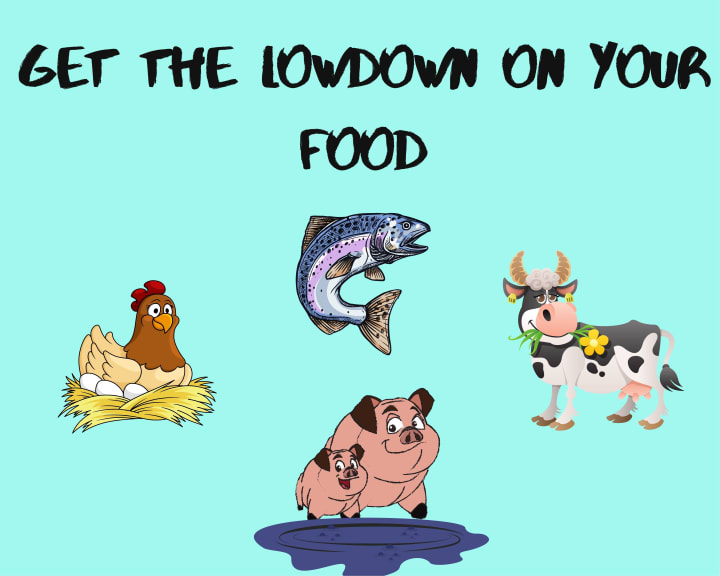
Our diet is also putting an incredible strain on the environment and our oceans.
I thought eating fish was a safe bet.
But fish farming is leading to the widespread use of antibiotics, chemicals, and hormones to help the fish grow more quickly. And this is leading to resistance and disease, which is impacting non-farmed fish and wildlife as well.
Fish farming also produces a significant amount of waste and fecal matter. This waste leads to the creation of algae pools which, we now know, depletes the water of oxygen and kills marine life.
Unfortunately, livestock production is no better.
Cattle, chickens, and other livestock emit almost 10% of all greenhouse gases. And cattle belch over 220 pounds of methane each year, which is 28X more potent in warming the atmosphere than carbon dioxide.
These animals also produce an exorbitant amount of waste.
Unfortunately, in the United States, animal waste is not treated in the same way as human waste. This means that a lot of this seeps into our water systems as runoff, before making its way into our oceans. Couple this with all the nitrogen fertilizers used to regenerate the soil, and you have the perfect recipe for disaster, with phosphate and nitrogen-rich chemicals leaking into our water system.
In my house, we still eat meat and fish. But we always buy sustainably caught, organic, USDA, and free-range cuts. When you are out shopping, be sure to look for USDA Certified Organic, USDA Verified No Antibiotics Ever, American Grass-fed, Certified Humane, and other similar labels.
In the United States, we also throw out 40% of our food. The carbon footprint associated with making this food is incredibly high, yet almost half of what we produce is just going to waste.
My husband and I try to cook smaller portions and we save and eat leftovers. We also always take our leftover food home from restaurants. If you have extra food, you can help by donating it to those who need it most in your community, before it goes to waste.
6. Rethink How You Care for Your Pets

In my house, we have a dog. And not just you run-of-the-mill dog. We have a giant Bernedoodle weighing in at 105 lbs. He is a carbon disaster.
But he is part of the family.
Unfortunately, pets are not the best for the environment. And one UCLA professor has estimated that all the dogs and cats in the United States generate close to 64M tons of carbon dioxide via waste and fecal matter each year. If you were to put 14M cars on the road for a year, you would get roughly the same output.
But even though our dog is an environmental catastrophe, there are several things we do to minimize his impact.
First, we use biodegradable poo bags. If you want to take things one step further, you can dispose of your dog’s waste in the toilet. This way it will get treated at the waste plants.
Be sure to also check what kind of food you are feeding your dogs and make sure it is sustainably produced. Brands like the Honest Kitchen and Wild Earth are both good. They may cost a little more, but they are worth it. We also steer clear of plastic toys with lots of plastic packaging.
Finally, if you haven’t yet brought a pet into your home, but have your heart set on one, look at adopting. There are over900M dogs and 600M cats in the world today. Many of these animals simply need a loving home.
7. Avoid Plastics. Period.
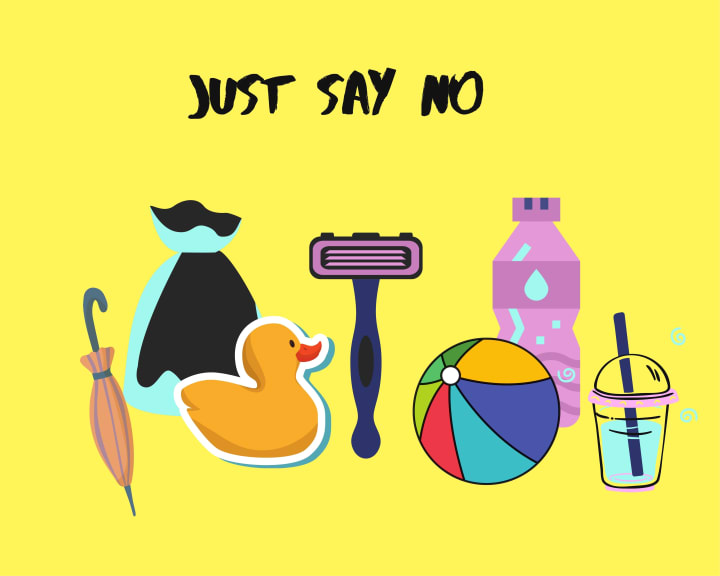
Many people are aware of the damage that single use plastics like straws and plastic wrap cause to the environment. But few are aware that only 9% of plastics are recyclable, despite labels that advertise otherwise.
What’s more, 80% of the plastic that ends up in the ocean, comes from land-based activities. We’ve already talked about microplastics from your clothes, beauty products, and wastewater. But commonly, plastics being transported to landfills or thrown away near beaches, find their way into the ocean.
In my house, I try to use as little plastic as possible. We tend to use cloth bags and reuse plastic food containers. We buy boxes instead of bottles. Seventh Generation sells many of their cleaning products in biodegradable boxes. We also use razors with replaceable blades instead of cheap disposable razors which end up in the garbage.
And if you have babies in the house, you can also think about using cloth diapers instead of disposable diapers. This act alone can make a big difference, as an estimated 7.6B lbs. of diapers are disposed each year.
8. Commute Wisely
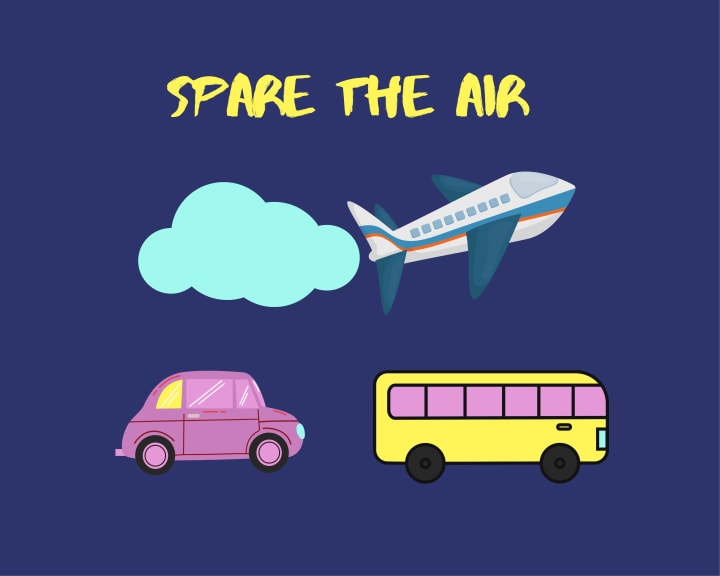
In the United States, transportation is one of the biggest contributors to greenhouse gas emissions. These emissions are raising the temperature of our oceans, leading to coral bleaching and a loss of habitat for marine life.
Planes account for 3% of total climate emissions. Cars account for 28% of emissions in the United States.
What is perhaps most alarming is the fact that cars today have been found to produce almost 7% more emissions than those manufactured under earlier standards.
Clearly car manufacturers have a long way to go. Electric and hybrid cars hold a lot of promise, but unfortunately they represent only 2.1% of the total car market in America today.
Having said that, my family has an electric car, and where possible, it’s a great idea to make a hybrid or an electric car your next purchase.
If you do want to stick with a gas guzzler, be sure to check out the actual CO2 emissions for your preferred car before you purchase. It turns out that Aston Martin, Porsche, Land Rover, and Subaru all have some of the highest CO2 emissions.
And don’t be fooled by brands like Smart, because it turns out they have one of the highest variances between their reported CO2 emissions and their actual results.
Taking the bus and train and carpooling can also help to offset your carbon footprint. So, get creative when it comes to getting around. And if you are local, try jumping on your bicycle. Your heart, the environment, and our oceans will thank you.
9. Vote and Donate

Finally, I think it is important to drive change by donating to environmental causes and by voting for candidates who believe in protecting our environment.
We need to make systemic changes across the globe. And as voters, we need to hold our politicians accountable.
Waterkeeper Alliance and a slew of other organizations are all working to save and protect our oceans. These organizations all take donations.
Oceana and several others also use funding to lobby governments around the world to effect change.
If you are living in the United States, like me, you can sign a petition to lobby government to Break Free of the Plastic Pollution Act. Or sign up to propel congress to pass legislation to protect our oceans from climate change.
If you live outside of the United States, not to worry, many of these organizations also work with governments across the globe, so be sure to reach out to find out more.
At the End of the Day
Five years ago, I was diagnosed with a lifelong illness. I became determined to get well and found that my new lifestyle was also helping the environment and our oceans.
This inspired me to do more.
I have discovered there is so much we can do to make our oceans and this world a better place.
But it all comes down to us. We control what happens next.
Many of the tips I’ve mentioned don’t take a lot of effort to put in place. But they will have a lasting effect.
It’s just a matter of getting started. One step at a time. And if we can take these steps, we can drive the sea change this planet, our bodies, and our oceans so desperately need.
Thank you for reading.
References:
World Economic Forum, These facts show how unsustainable the fashion industry is
Ellen Macarthur Foundation, A New Textiles Economy
ACS Publications, Accumulation of Microplastic on Shorelines Worldwide: Sources and Sinks
Surfrider Foundation, Bills and Best Practices for Microfiber Pollution Solutions
PSCI, Toilets
Made Safe Org, Made Safe Hazard List
Five Gyres, Plastic Microbeads
Animal Frontiers, Livestock and climate change: impact of livestock on climate and mitigation strategies
PBS.org, Americans waste up to 40% of the food they produce
PLOS One, Environmental impacts of food consumption by dogs and cats
Simply Insurance, Pet Statistics
National Geographic, A whopping 91% of plastic isn't recycled
Fair Planet, Reduce and Re-use, Is a plastic-free world possible?
Green Education Foundation, Waste Reduction Tips
Treehugger, Plane, train or automobile, which has the biggest footprint?
USA Facts, How many electric cars are on the road in the United States?
Guardian, New cars producing more carbon dioxide than older models
bts.gov, Hybrid-electric, plug-in and electric vehicle sales
Courtney Burry, The High Cost Of Fashion
About the Creator
Courtney Burry
I love to use satire and humor. I write about travel, politics, family, feminism, sports, health & music. So, basically everything.
Enjoyed the story? Support the Creator.
Subscribe for free to receive all their stories in your feed. You could also pledge your support or give them a one-off tip, letting them know you appreciate their work.



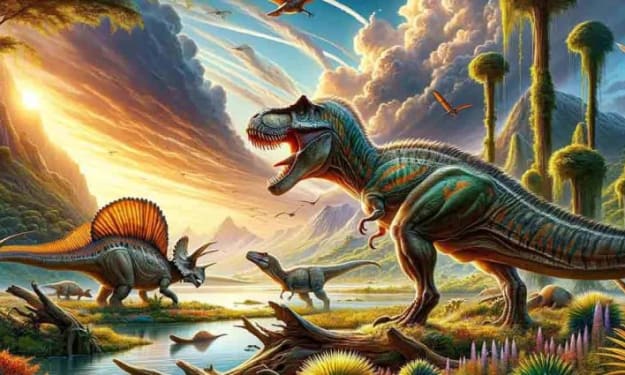


Comments
There are no comments for this story
Be the first to respond and start the conversation.